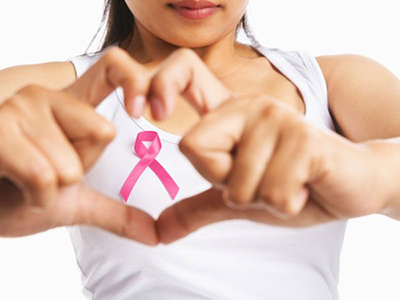
Source: www.freemalaysiatoday.com
Are all breast lumps cancerous?
Women are advised to check their own breasts as soon as their period cycle ends each month. This way, any abnormalities on the breasts can be identified. Not all breast lumps are cancerous. There are many reasons or causes for breast lumps or cysts. They are:
- Breast cancer: Lumps are usually painless in the breasts. Some patients experience changes on the skin such as redness (erythematous), taut or tight feeling skin, or dimpling. These hard lumps remain or become larger among women with menopause and not related to one’s period cycle.
- Fibroadenosis: This is a benign growth which is non-cancerous. Lumps are usually grainy, sometimes accompanied with pain and the size changes following the period cycle.
- Galactocele (milk cyst): Lumps that occur among mothers who are breastfeeding.
- Breast cyst: Soft lumps. Can be found among patients of all ages.
- Fibroadenoma: Growth that occurs frequently among women aged younger than 30 years old. Usually do not cause pain and patients will feel as if there are marbles in their breasts.
What will the doctor do?
Diagnosis or the cause of the breast lump will be identified once the doctor has taken the patient’s health history and examined the lump. Several questions that will be asked by the doctor are:
- Different breast shapes. Either smaller or larger on one side.
- Nipple inversion
- Continuous or new changes of the skin of the breast
- Liquid leaking out of nipples – colour, amount, frequency
- Lumps – duration, size, pain levels, location on breasts
- Relation between the lumps and your period cycle
- Patients exceeding the age of 40 years old for those who have not reached menopause and above age 50 for those going through menopause.
- History of breast lumps reported as atypical (abnormal cells and potentially cancerous).
- History of breast cancer in the family and genetic anomaly such as BRCA1 and BRCA2.
Once the patient’s health history is recorded, the doctors will assess the risk of breast cancer among patients with breast lumps. This way, the patient can be categorised as high risk, medium risk, or low risk for breast cancer. Risk factors for developing breast cancer are:
- Patients who have had radiotherapy for conditions such as Hodgkin Lymphoma.
- First pregnancy after the age of 30.
- Does not breastfeed (breastfeeding for a year can prevent breast cancer).
- Using oestrogen or hormone replacement therapy.
- First menstruation before the age of 12 years old
- Menopause after the age of 55 years old.
The patient’s breast will then be examined. This is to determine the location of the lumps. The lymph nodes in the underarms and the neck will also be checked, because these are the glands where breast cancer usually spreads. If the patient is suspected to have breast cancer, the lungs, abdomen, and spine will also be checked.
What are the tests that will be carried out?
Specific tests for the breasts will be carried out ranging from mammography and ultrasound to biopsy or cytology.
- Mammography – Special x-ray for the breasts
- Ultrasound – To identify the location and the characteristics of the lumps, or any inflammation of the glands in the underarms.
- Biopsy or cytology – A needle will be used to take tissue samples from the breast lump and the tissue samples will then be observed under a microscope to identify the lump type..
What are the treatments that will be given?
Treatments will be based on the type and t extend of the illness. Cause of illness can only be determined once the patient’s health history, clinical examination, and extended tests have been completed. One of the treatment for breast lump is surgery; either removal of the cyst only (excision biopsy / wide local excision) or whole breast and underarm glands removal (mastectomy with auxiliary lymph node dissection). Type of surgery depends on the results of biopsy or cytology. Follow-up treatment includes chemotherapy, radiotherapy and others.
I have a breast lump. What should I do?
Once you have discovered a breast lump, you are advised to see the nearest doctor for basic examinations to be performed. Extra tests will be done depending on the possibility of suspected condition. However, basic tests such as ultrasound or mammography must be carried out for all patients with breast lump by a radiologist.
Dr. Ruhi Fadzlyana is a surgeon based at a hospital in Kuala Lumpur and lectures at a local university. This article is translated by Nur Nadhirah from https://www.mmgazette.com/ketumbuhan-di-payudara-dr-ruhi-fadzlyana/
References:
- UpToDate : Clinical manifestations and diagnosis of a palpable breast mass
- CPG : Management of Breast Cancer (2nd Edition), Ministry of Health Malaysia.
[This article belongs to The Malaysian Medical Gazette. Any republication (online or offline) without written permission from The Malaysian Medical Gazette is prohibited.]
